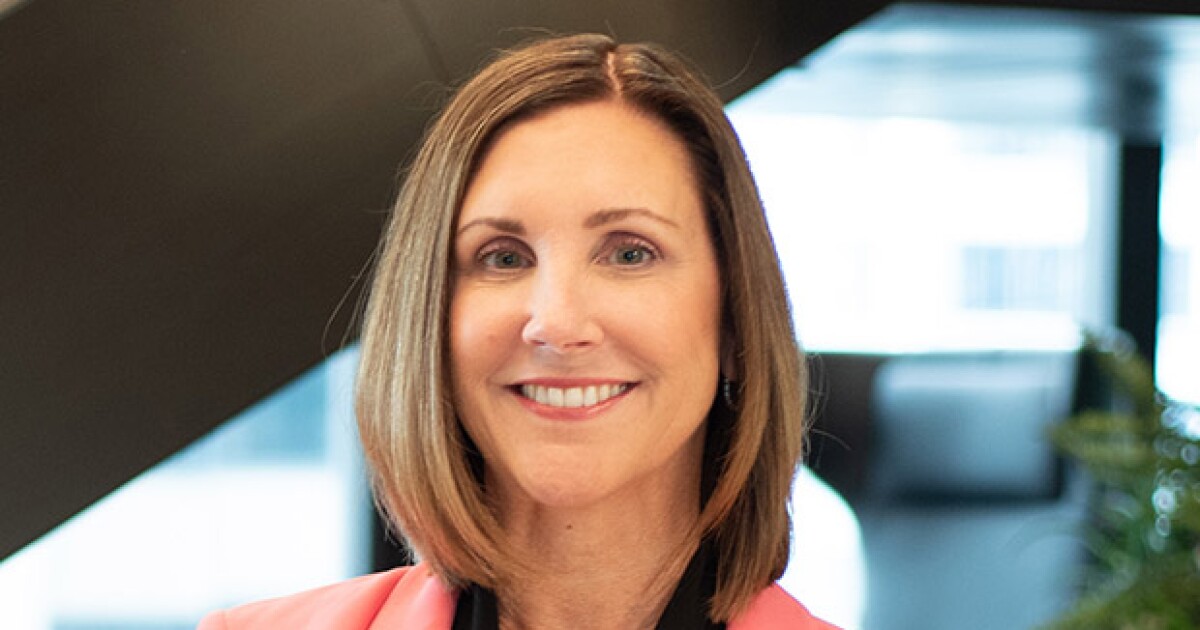Accounting
Boomer’s Blueprint: Branding is important for CAS
Published
4 weeks agoon

Client accounting services — or is it client accounting & advisory services? — has been a buzzword across the accounting profession for years. Yet, despite its prevalence and the potential it holds to redefine professional services, a consensus on its definition seems elusive.
Different firms, as well as different authoritative bodies like the American Institute of CPAs and CPA.com, offer varied interpretations of what CAS encompasses. This diversity in understanding reflects the evolving nature of accounting and the need to align these services with client expectations and the rapidly changing business landscape. In other words, the profession needs to view these services from the client’s perspective, rather than from the inside out.
The challenges
At its core, CAS/CAAS aims to transcend traditional transactional and compliance services, venturing into the realms of advisory and consulting. However, the transition is fraught with challenges, primarily due to the heterogeneous nature of the definitions provided by service providers.
Each firm tailors its CAS/CAAS offerings based on its strength, market position and client needs. This diversity leads to a spectrum of services that, while beneficial, complicate the task of setting industrywide standards and create confusion in the market.
The AICPA and CPA.com have been at the forefront of efforts to bring uniformity to what CAS entails. Their definitions often emphasize the integration of technology, strategic planning, and business process improvement into accounting services. Nonetheless, these efforts are juxtaposed against individual firms’ and non-CPA competitors’ definitions, which might prioritize specific service aspects, such as financial planning, risk management or digital transformation consulting.
From transactional to transformative
To navigate the complexity of CAS/CAAS, it’s helpful to consider the services under four broad categories: transactional, compliance, advisory and consulting. Capacity is a challenge at the transactional and compliance level, while capability becomes a challenge at the advisory and consulting levels. The following definitions will hopefully provide some clarity.
Transactional services include day-to-day bookkeeping and accounting tasks. While essential, they are increasingly becoming automated through software solutions and artificial intelligence, pushing firms to consider higher-value offerings. AI is everywhere in the business capability model.
Compliance services ensure that clients meet regulatory requirements and reporting standards. Although critical, these are often seen as baseline services that many clients expect as a given, while many providers view them as highly technical and advisory.
Advisory services represent a step up, focusing on providing strategic advice to help clients better manage their finances, optimize operations, and plan for growth.
Consulting services delve into more specialized areas such as financial modeling, visioning/planning, mergers and acquisitions, and technology implementations. Here, the expertise is not just in accounting but in leveraging financial insights to drive business transformation.
Advisory and consulting services are more of a team sport, while the rugged individual can often meet the wants and needs of transactional and compliance services.
Aligning with market wants and needs
Amid these challenges and rapid change, there is a growing recognition of the need to brand and package service offerings in a way that resonates with clients. This means moving beyond jargon and profession-specific language to articulate the tangible benefits these services can deliver.
For clients, the value of these services is not in the technicalities of what the firm offers but in how these services help them achieve their business objectives. Too many firms get caught in their silos, restricting data flow and communications. They are also caught in the existing business model, believing time is money, rather than money is time.
Whether improving financial visibility, strategic growth planning or operational effectiveness, firms must package and price these services as part of the client’s success story. In other words, how does the firm make the client the hero?
This client-centric approach requires a deep understanding of the challenges and opportunities within specific industries and the ability to tailor services accordingly.
Competing strategies
Most firms have elected to add corresponding services to tax and accounting (transactional and compliance), but is it more compelling to start with a blank slate, determine target clients, and then package services around those clients while including tax and accounting in the package, rather than leading with tax and accounting? From the market’s perspective, clients want advisory and consulting services and require transactional and compliance services. Value is determined by the client, not by the provider. Most firms have too many clients and are underserving their ideal clients.
The future of CAS/CAAS
The future is promising but demands a concerted effort from firms to redefine and align their services with the evolving market. This includes a continuous investment in technology and talent, fostering a culture of innovation, and developing a nuanced understanding of the industries served.
Moreover, as the profession navigates the impacts of outsourcing and AI, it is crucial to embrace these changes as opportunities rather than dangers. Branding is a marketing function. The accounting profession should rethink its approach to marketing and sales. Order-taking is no longer enough. Professional marketing and sales are needed to sustain and grow the profession’s relevance.
Action plan for alignment and innovation
Here are your next steps as you move your firm forward in CAS/CAAS:
1. Begin with a blank slate. Challenge the status quo by reimagining your service offerings from the ground up. What is your vision for the next three years? Do you have a strategic plan to support that vision? This process involves identifying ideal client profiles and understanding their evolving needs, which extends beyond traditional accounting services.
2. Embrace ideation and experimentation. Innovation is the result of creativity and experimentation. Foster a culture that encourages creative thinking and experimentation, allowing for developing new services and delivery models that respond to the changing business environment.
3. Leverage technology and AI. Strategically applying outsourcing and AI technologies can enhance efficiencies and enable team members to focus on high-value advisory and consulting services. This transition requires investment in technology and training to increase capacity and capabilities. AI is everywhere (or should be) in your firm.
4. Focus on client-centric service design. Design your service offerings with the client at the center, ensuring you address their specific business challenges and opportunities. This approach enhances client satisfaction and positions the firm as a stakeholder in client success. It can also allow team members to operate according to their unique abilities.
5. Navigate the impact of private equity. Consider the strategic implications of private equity in the accounting profession. This may involve evaluating opportunities for investment in technology, talent and market expansion to drive growth and innovation.
6. Adopt a continuous-learning mindset. The shift toward advisory and consulting services demands a commitment to continuous learning and professional development. Engage in a peer community.
Overcoming the gravity of the past
Transforming to a more innovative and client-centric service model isn’t without its challenges. The accounting profession has historically been rooted in tradition, with a strong inclination toward maintaining the status quo. However, the gravity of the past should not outweigh the pull of the future, and the future is bright.
Firms willing to rethink their service models, embrace new technologies, and focus on delivering value-aligned services will be better positioned to thrive in the evolving landscape. Change leadership, process management, and project management are all required. We call this the Transformation Triangle!
Think — plan — grow!
You may like
Accounting
EV makers win 2-year extension to qualify for tax credits
Published
2 weeks agoon
May 4, 2024

The Biden administration gave carmakers a partial reprieve in finalizing electric-vehicle tax credit rules intended to loosen China’s grip on battery materials crucial to the car industry’s future.
Starting in 2025, plug-in cars containing critical minerals from businesses controlled by U.S. geopolitical foes, including China, will be ineligible for up to $7,500 tax credits, the Treasury Department said Friday. Automakers will get an extra two years, however, to shore up sourcing of graphite and other materials considered difficult to trace to their origin.
The rules put finishing touches on President Joe Biden’s push to develop an alternative to China’s preeminent EV and battery supply chains. The administration is imposing stringent sourcing requirements for raw materials and components in order for electric cars to qualify for the tax credits that are a powerful draw for consumers otherwise put off by
“These actions provide a strong signal to automakers that we want to see EVs built here in America with components and critical minerals sourced from the U.S. and our allies and partners,” White House Climate adviser John Podesta said.
The two-year exemption speaks to the challenges automakers have had reducing their reliance on Chinese suppliers of materials such as
The Biden administration’s rules don’t allow tax breaks for vehicles with batteries containing critical minerals from foreign entities of concern, a term referring to businesses controlled by US geopolitical foes such as China, North Korea, Russia and Iran. Those requirements take effect in 2025, as proposed.
But Biden has given auto and battery manufacturers some flexibility on this front, too.
Automakers will now have until 2027 to curb the use of certain difficult-to-trace materials from FEOCs, provided that they submit plans to comply after the two-year transition and it’s approved by the government, the Treasury Department said.
“FEOC exemptions for any battery materials should be temporary,” said Abigail Hunter, the executive director of the Center for Critical Minerals Strategy at SAFE, a Washington think tank. “We need a clear exit strategy, lest we continue our dependencies on adversaries and further undermine the competitiveness of U.S. and allied critical minerals projects.”
The rules release concludes two years of work on requirements that already have reduced the number of EVs eligible for tax credits. About 20 models qualify today, compared to as many as 70 previously. Treasury Department officials said Friday they expect the number of qualifying vehicles to continue to fluctuate as companies adjust their supply chains.
Automakers including Tesla Inc., General Motors Co. and Toyota Motor Corp. have lobbied for additional flexibility to meet requirements. A lobby group representing automakers based outside the US praised the additional two years provided for the difficult-to-trace materials.
“It will take time for the global production and sourcing of graphite and other critical minerals needed to produce EVs to match the strict standards required by automakers,” Autos Drive America President Jennifer Safavian said in a statement.
Accounting
Oregon senator Ron Wyden demands refunds for TurboTax customers over glitch
Published
2 weeks agoon
May 4, 2024
Senate Finance Committee Chairman Ron Wyden, D-Oregon, demanded
The glitch,
“Fixing this error will require identifying all affected Oregonians, notifying them, and ensuring they can be made whole,” said the senator. “In part because of TurboTax’s various guarantees and market share, Oregonians who overpaid due to TurboTax’s error likely assumed the software opted them into claiming state standard deduction to minimize their taxes. That assumption was wrong. And because the vast majority of taxpayers understandably dread filing season and avoid thinking about taxes after it ends, many of those affected will not learn on their own that they overpaid. Intuit must act to inform them and help them get the full tax refunds they are entitled to receive.”

Tiffany Hagler-Geard/Bloomberg
An Intuit spokesperson said the company is currently working to resolve the issue, referencing their tax return lifetime guarantee.
“As part of our
The senator has also asked Intuit for an explanation of how this glitch happened in the first place, as well as an approximate timeline for the steps it took once it became aware of it. He has also asked for a count of precisely how many people were affected, as well as Intuit’s plans for both addressing this problem and what the company will do to prevent it in the future.


RSM US named its first enterprise client experience leader; the Financial Accounting Foundation is looking for nominees for its Financial Accounting Standards Advisory Council; RKL named a new office managing partner; REDW appointed three new vice presidents; and other firm and personnel news from across the accounting profession.

Betting on the Kentucky Derby? Here’s how to think like a professional handicapper.

Warren Buffett says Greg Abel will make Berkshire Hathaway investing decisions when he’s gone

EV makers win 2-year extension to qualify for tax credits

Are American progressives making themselves sad?

‘Best Firms for Tech’ 2024 deadline extended to April 10

